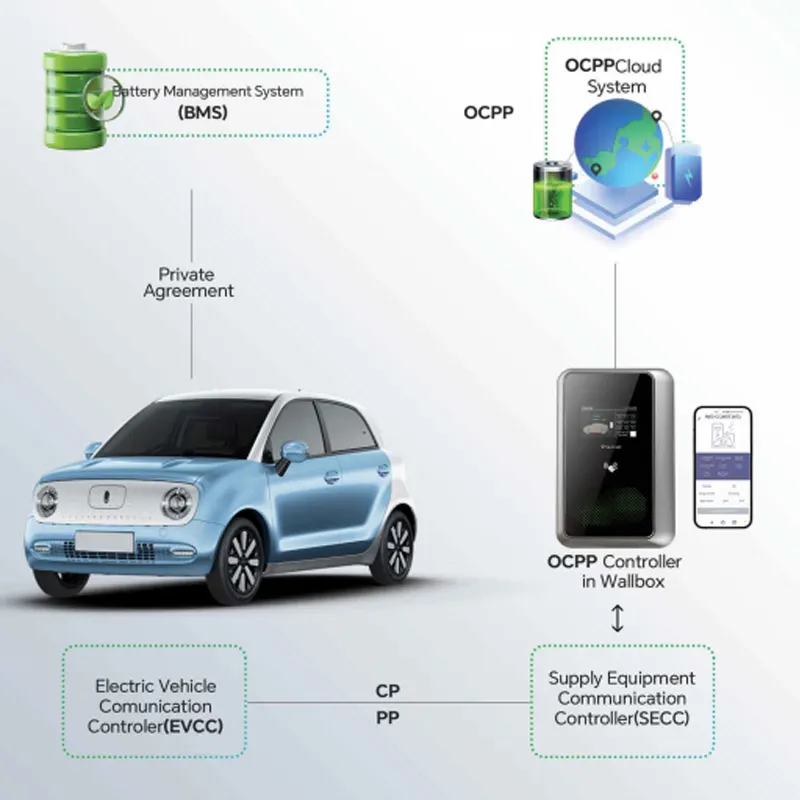Understanding the Basics of Open Charge Point Protocol (OCPP)

Have you ever wondered how your electric car charges when you plug it in? It is called a charge point! Charge points are unique stations that supply electric car batteries with energy to allow them to operate in the first place. As we require food to get energy, electric cars require charge points to get energy. For these charge points to be able to work optimally and efficiently, it is necessary to understand the Open Charge Point Protocol (OCPP).
What is OCPP
Think of OCPP as the support system that connects charge points with the charging network. Just try and talk with someone that speaks a different language; it is going to be difficult to communicate! OCPP was developed for multi-vendor charge points to communicate effortlessly, regardless of manufacturer. That also means you'll be able to use any charge point you want in the future, without wondering whether it will fit or whether it'll work as intended. All you have to do is plug-in to charge!
Important Features of OCPP
Here are a few features that OCPP offers that prove its great utility:
Simple Communication: OCPP provides common rules and messages familiar to all charge points. This helps them communicate with each other without any confusion. The more charging points speak the same language, the more they understand each other which in turn allows for a smoother process for all devices.
Remote management OCPP enables remote management of charge points. This allows them to update software, change settings, and see charge point usage remotely instead of having to travel to each charge point. How would you like to be able to repair your computer without being in front of it? For charge point operators, this simplifies matters significantly.
Interoperable: Open Charge Point Protocol enabled charge points can seamlessly interoperate, regardless of the manufacturer. It helps drivers to have more options to find the most suitable charge point. One of those benefits is flexibility, for example, if you are driving and you need to charge your car, you can use any works with OCPP charge point. What it means is drivers should not be limited to where they charge as they will not be stuck searching for a specific type of charge point.
How OCPP Works
Now, let us discuss how OCPP functions. OCPP is based on TCP/IP which is a set of rules that allows computers to communicate and exchange information. Think of it like a giant highway that allows information to move from one place to another. Charge points could send/receive information with a single server, which acts as a core hub for a charging network. If you take a look at the messages that they use, there are two types of them requests and responses.
The charge point receives a message from the charging network telling it to do something, such as to start charging — this is called a request.
This is known as a response, meaning that the charge point responds back to the network with certain data or to indicate that it received the request.
And all this back-and-forth communication helps everything go off without a hitch.
What are the OCPP version differences
There are two primary flavours of the OCPP specification, these are OCPP 1.6 and OCPP 2.0. Following are some of the differences between the two:
Safety: OCPP 2.0 has improved safety features that keep messages secret and ensure that only the right people can read them. The more we can protect information, the better, as we must ensure that only trusted users can gain access to sensitive data.
Message Acknowledgment: Unlike its predecessor, OCPP 2.0 or 4G Modle ensures that every message is acknowledged by the receiver, which enhances the reliability. Meaning every time the charge point receives a message, it will reply back to confirm that it has received it. This avoids you from needing to make errors and do everything function properly.
It also brings new features that are extremely beneficial, including scheduling for charging times, unexpected problem reporting, and smart consumption of energy. All of these features enhance the overall charging experience for all.
Things to Remember About OCPP
There are some crucial considerations when it comes to OCPP, such as:
Technical requirements: Charge points using OCPP must fulfil specific technical requirements, such as the appropriate software in situ. This guarantees that they are able to communicate with each other and the central server.
System Compatibility Charging network operators need to ensure that their backend systems are compatible with the version of OCPP in the charge points. This prevents problems with charging, ensuring it is the same.
Security Codes: OCPP 2.0 has extensive security codes that network operators may be able use in order to secure their systems from being attacked. As we lock our doors to protect our house, using these configures helps to protect the charging network.
So in short, Open Charge Point Protocol (OCPP) and DLB is a key player which enabling communication and interoperability within the EV charge points. Enabling simple, secure, and reliable electric vehicle charging. OCPP is important for the future of electric cars, as it allows them to be managed from a distance and for charging points to work in cooperation from a distance, which would be vital when mass adoption occurs. With the increasing number of electric cars on the road, OCPP will enable charging stations to prepare to electric car charging needs of all users.
Comments
Post a Comment